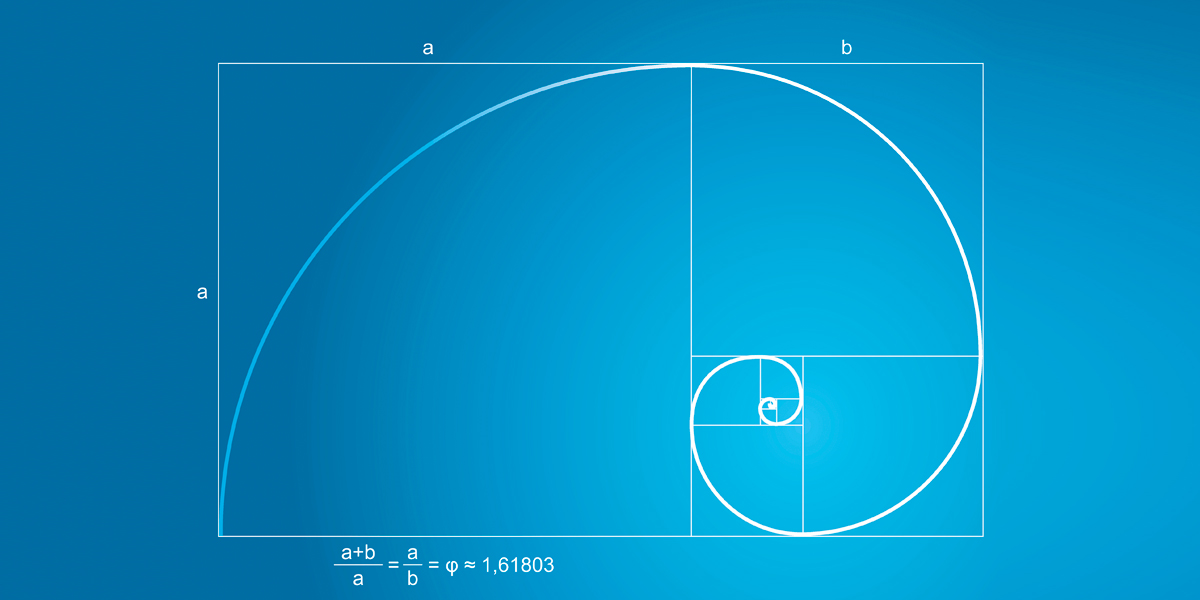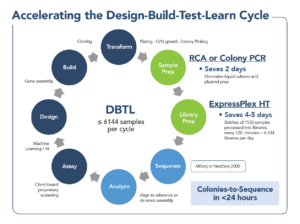
Magic Numbers in Synthetic Biology: 6144, 384 & 100
Certain numbers are well-known in science and math.
- Archimedes’ Constant (Pi): 3.1415
- Avogadro’s Constant: 6.0221 x 10^23
- The Golden Ratio (Fibonacci sequence): 1.6180
But what about synthetic biology? Are there well-known numbers in synbio? There are now. 6144, 384, and 90. In fact they come in the form of an equation “6144 + 384 + 100 = zero” that can accelerate design-build-test-learn (DBTL) cycling.
Next-generation Sequencing (NGS) Accelerates Synthetic Construct Screening
Synthetic biology’s iterative DBTL cycle lies at the core of engineering biological systems. However, the efficiency of this cycle relies heavily on accurate and rapid screening of synthetic constructs such as plasmids and amplicons. NGS is an enabling genomic tool with many advantages in construct screening within synthetic biology campaigns, including:
- Rapid Screening – NGS platforms offer unparalleled speed, allowing for the rapid screening of large plasmid libraries. This acceleration in screening process expedites the identification of desired plasmids, facilitating the iterative design-build-test cycles characteristic of synthetic biology.
- Comprehensive Analysis – NGS provides detailed insights into plasmid composition and structure, enabling the detection of target sequences, genetic variants, and modifications. This comprehensive analysis ensures the accurate characterization of plasmids, enhancing the reliability of synthetic biology designs.
- Multiplexing Capabilities – NGS allows for the simultaneous analysis of multiple samples, enabling high-throughput screening of diverse plasmid libraries. This multiplexing capability streamlines the screening process, increasing throughput while reducing the time and resources required.
- Customizable Workflows – NGS platforms support customizable sequencing protocols and bioinformatics pipelines, allowing researchers to tailor the screening process to specific project requirements. This flexibility enables the implementation of specialized strategies for target enrichment, sequence assembly, and variant calling, optimizing the screening workflow for synthetic biology applications.
Sample Multiplexing Drives NGS Throughput
While NGS has become an indispensable tool for synthetic construct screening, continuing to increase the throughput of NGS is essential for enabling faster design iteration, construct assembly, functional testing, and iterative learning cycles.
Sample multiplexing is a crucial strategy in increasing NGS screening, enabling researchers to increase throughput, reduce costs, optimize resources, improve data management, and enhance experimental flexibility. By harnessing the power of multiplexing, researchers can accelerate the pace of DBTL screening and expedite the discovery and characterization of novel genetic constructs within synthetic biology.
6144 + 384 + 100 = ZERO NGS Library Preparation Bottlenecks
Central to all NGS workflows is library preparation, a crucial step where DNA or RNA samples are converted into libraries suitable for sequencing. During NGS library preparation samples can be barcoded, also known as indexing, to facilitate sample multiplexing. Not all library preparation workflows are created to handle thousands of samples and can lead to bottlenecks in an NGS screening campaign.
Designed for ultra-high-throughput library preparation, ExpressPlex 2.0 offers greater efficiency and multiplexing capabilities than any other method. ExpressPlex 2.0 by the numbers:
- 6144 indices for massive multiplexing
- 384-well pre-plated, ready-to-use reagents
- 100-minute streamlined workflow
- 0 NGS library preparation bottlenecks

Compressing DBTL Cycles by 4 to 5 Days
The simplicity of the ExpressPlex 2.0 workflow, its multiplexing of over 6000 samples in a single sequencing run, and its pre-plated reagents in a 384-well configuration make it uniquely well-suited for automated, ultra-high throughput library prep from plasmids and synthetic constructs.
Additionally, ExpressPlex 2.0 is fully compatible with rolling circle amplification (RCA) or direct PCR from colonies eliminating the need for conventional plasmid purification reducing the colony-to-sequence turnaround to <24 hours.
Read how Octant is using ExpressPlex technology in its OCTOPUS 3.0 protocol: Next-day Turnaround of Full Plasmid Sequencing Directly From Colonies
Conclusion
Fast and reproducible sequencing of synthetic construct libraries has emerged as a powerful tool that enables synthetic biology researchers to rapidly determine if their sequences of interest are present. With the continued evolution of NGS library preparation multiplexing and workflow simplicity, such as ExpressPlex 2.0, the pace of NGS synthetic construct screening can continue to accelerate synthetic biology iterative learning and bring to light new breakthroughs in human health.
